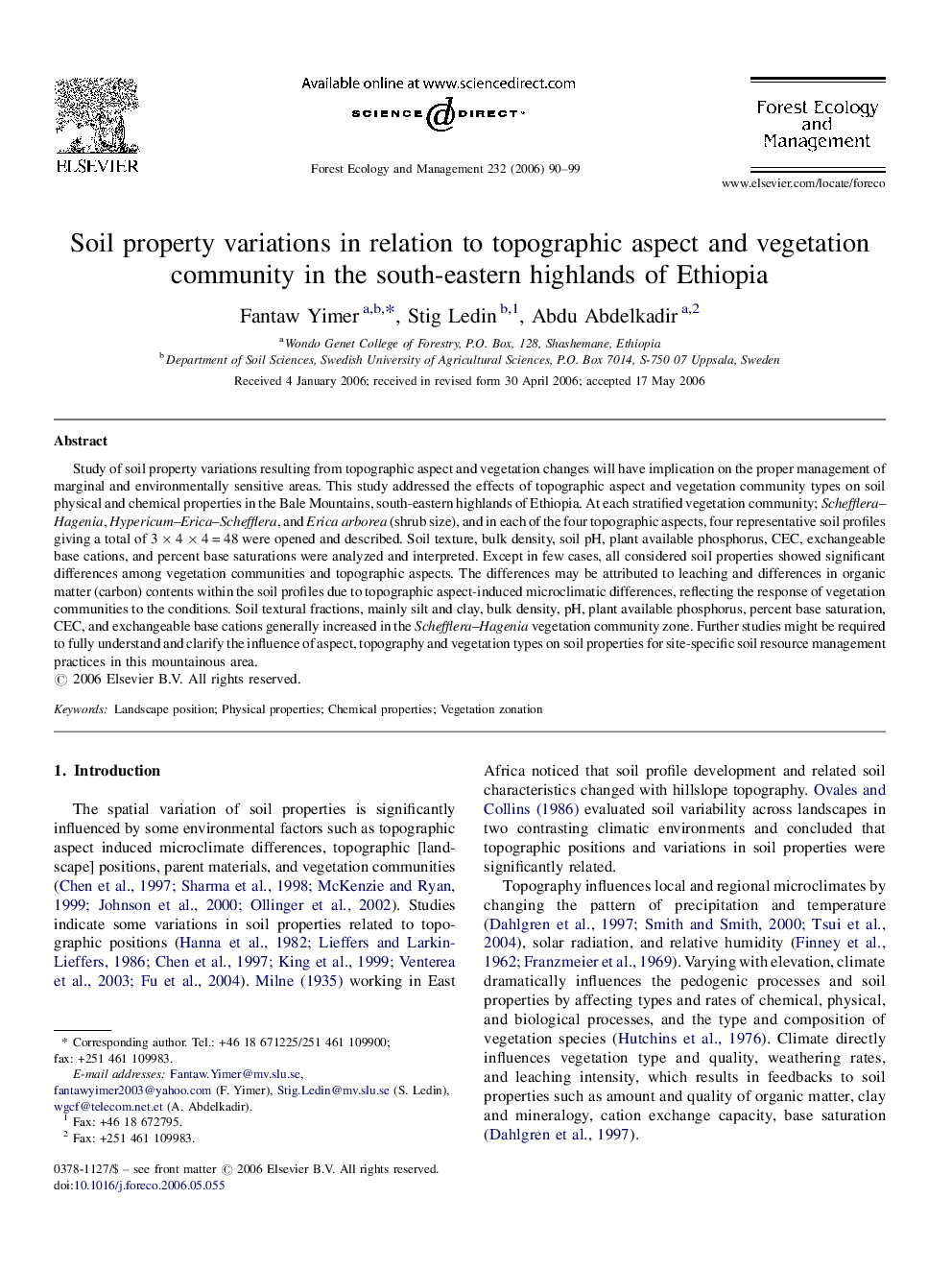| Article ID | Journal | Published Year | Pages | File Type |
|---|---|---|---|---|
| 90483 | Forest Ecology and Management | 2006 | 10 Pages |
Study of soil property variations resulting from topographic aspect and vegetation changes will have implication on the proper management of marginal and environmentally sensitive areas. This study addressed the effects of topographic aspect and vegetation community types on soil physical and chemical properties in the Bale Mountains, south-eastern highlands of Ethiopia. At each stratified vegetation community; Schefflera–Hagenia, Hypericum–Erica–Schefflera, and Erica arborea (shrub size), and in each of the four topographic aspects, four representative soil profiles giving a total of 3 × 4 × 4 = 48 were opened and described. Soil texture, bulk density, soil pH, plant available phosphorus, CEC, exchangeable base cations, and percent base saturations were analyzed and interpreted. Except in few cases, all considered soil properties showed significant differences among vegetation communities and topographic aspects. The differences may be attributed to leaching and differences in organic matter (carbon) contents within the soil profiles due to topographic aspect-induced microclimatic differences, reflecting the response of vegetation communities to the conditions. Soil textural fractions, mainly silt and clay, bulk density, pH, plant available phosphorus, percent base saturation, CEC, and exchangeable base cations generally increased in the Schefflera–Hagenia vegetation community zone. Further studies might be required to fully understand and clarify the influence of aspect, topography and vegetation types on soil properties for site-specific soil resource management practices in this mountainous area.
